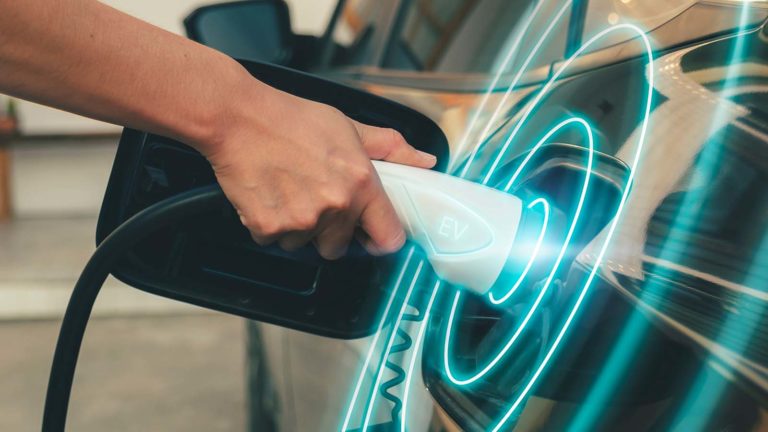The battery market is a dynamic and fast-growing sector driven by increased demand from both governments and consumers alike for clean energy and transportation. Capturing market share in this sector requires competitive technology and access to lithium, nickel and cobalt. According to a recent industry report, the global battery market size was valued at $112.1 billion in 2021 and should reach $406.1 billion by 2023. This represents a compound annual growth rate (CAGR) of 15.9% from 2022 to 2030. The main drivers of growth are the rising adoption of electric vehicles (EVs) amongst private vehicle owners, the expansion of renewable energy sources and the development of energy storage systems. This has ultimately led to the rise of once undervalued battery stocks.
Equity markets in the United States have soared this year – and so have the valuations of companies in various sectors. However, this does not mean there have not been bouts of volatility and selling pressure. For public equity investors desiring to profit from both buoyant markets and the battery sector’s overall dynamism, they might do well considering investments into undervalued battery stocks. Below is a list of three battery companies that are encroaching upon attractive entry points.
Tesla (TSLA)

Tesla (NASDAQ: TSLA) is an undisputed leader in the electric vehicle industry, with a market share of approximately 16% globally. The EV maker is also a pioneer in battery technology, developing its own proprietary battery cells that offer higher energy density, lower cost and faster charging than conventional cells.
In particular, Tesla’s latest innovation is the 4680-battery cell, which uses a dry-coating technique to produce larger battery cells. This could effectively decrease the price of Tesla Model Y by 8%. Still, production capacity throughout the past couple of years had been less than sufficient. With incentives from the Inflation Reduction Act, Tesla has made investments to expand the production of this type of battery cell in the U.S. Tesla is also planning to produce its own 4680 cells at its Gigafactories in Texas, Berlin and Shanghai. However, it will also source them from its long-time partner Panasonic, which is investing $700 million to produce the cells at its Wakayama factory in Japan this year.
Tesla’s enterprise value is currently trading around 7.4x forward sales and 39.9x forward earnings before interest, taxes, depreciation and amortization (EBITDA), which is not necessarily cheap. However, the EV maker probably has both the branding and market share to convince investors otherwise. In its Q2’2023 earnings print, Tesla beat both revenue and diluted EPS estimates, but operating margins compressed due to the average selling price of its vehicles being lower. Wall Street is still skeptical about whether or not Tesla’s discounts will work in the long-term, and shares have traded down more than 8% since then. For eager investors who believe the EV maker will continue to beat expectations, now might be a good time to invest.
General Motors (GM)

General Motors (NYSE: GM) is one of the largest and oldest automakers in the world. The company has a presence in more than 100 countries. GM is also one of the most aggressive players in the electric vehicle space, aiming to sell more than 1 million EVs annually by 2025 and achieve an all-electric portfolio by 2035. GM has developed its own battery platform called Ultium, which can power a variety of EV models with different sizes, shapes and performance levels. Ultium batteries are also expected to offer up to 300 miles of range on a full charge. GM has partnered with LG Energy Solution to build three battery factories in Ohio, Michigan and Tennessee.
Being a legacy carmaker, GM’s valuation is quite cheap. The company’s enterprise value trades at 0.9x forward sales and 6.6x forward EBITDA, which is significantly lower than its rival Tesla. GM’s revenue declined by 11% in 2020 due to the pandemic, but has largely rebounded with top-line growth spiking up to 23% in 2022. GM also pays a dividend yield of 0.94%, which could potentially add to its attractiveness for income investors. Ultimately, the General Motors’ market share gains in the EV space, investments in battery production and cheap valuation should make the stock a no-brainer for long-term investors looking for undervalued shares.
Panasonic (PCRFY)

Panasonic (OTC: PCRFY) is a Japanese conglomerate that produces a wide range of products and services, from consumer electronics to industrial solutions. The conglomerate happens to also be a major player in the battery industry, supplying lithium-ion cells to Tesla and other automakers such as Toyota and Honda. In fact, Panasonic ranked fourth in global market share of EV batteries in 2022. Furthermore, Panasonic has been collaborating with Tesla since 2010, and currently operates a joint venture at Tesla’s Gigafactory Nevada, where it produces 2170 cells for Tesla’s Model 3 vehicles. As mentioned earlier, Panasonic is also investing heavily in producing Tesla’s new 4680 cells at its Wakayama factory in Japan.
Panasonic is currenly valued around $28.45 billion, which translates to a forward sales ratio of 0.5 and a forward EBITDA ratio of 5.4. This is technically cheaper than both Tesla and GM. Revenue growth has also held steadily in the low double digits for the company’s fiscal years 2022 and 2023. On Monday, the Japanese conglomerate posted a significant gain in quarterly profit, buoyed by strong performance in both automotive and energy segments. These advances along with the clear opportunities in supplying batteries to a burgeoning market should clearly put Panasonic on the radar of any investor interested in the battery sector.
On the date of publication, Tyrik Torres did not have (either directly or indirectly) any positions in the securities mentioned in this article. The opinions expressed in this article are those of the writer, subject to the InvestorPlace.com Publishing Guidelines.
